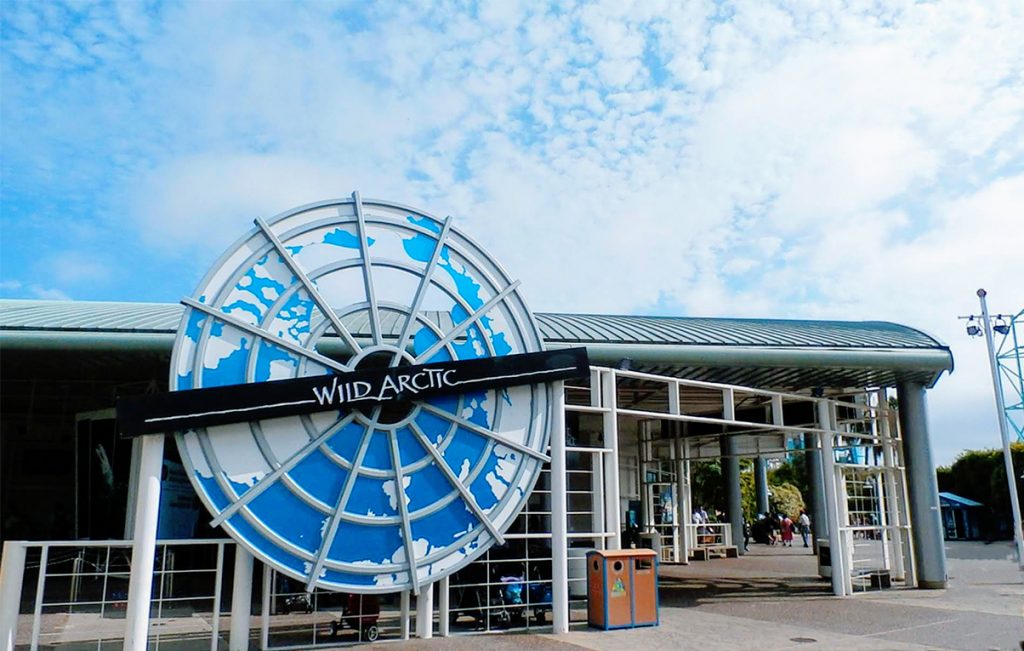
After announcing plans to demolish the Wild Arctic simulator ride in early 2019, SeaWorld San Diego is in the early stages of proposing a new roller coaster that will occupy the site and extend into the adjacent parking lot. The new project will remain totally under 30 feet in height, will likely be themed to an Arctic rescue mission, and is planned to open in the summer of 2021.
Please remember that although the information presented is believed to be current, the project will still need to be approved by the California Coastal Commission. This means that there may be very significant changes to the final project, and it can be modified, delayed, or even canceled at any point in time.
The Plans
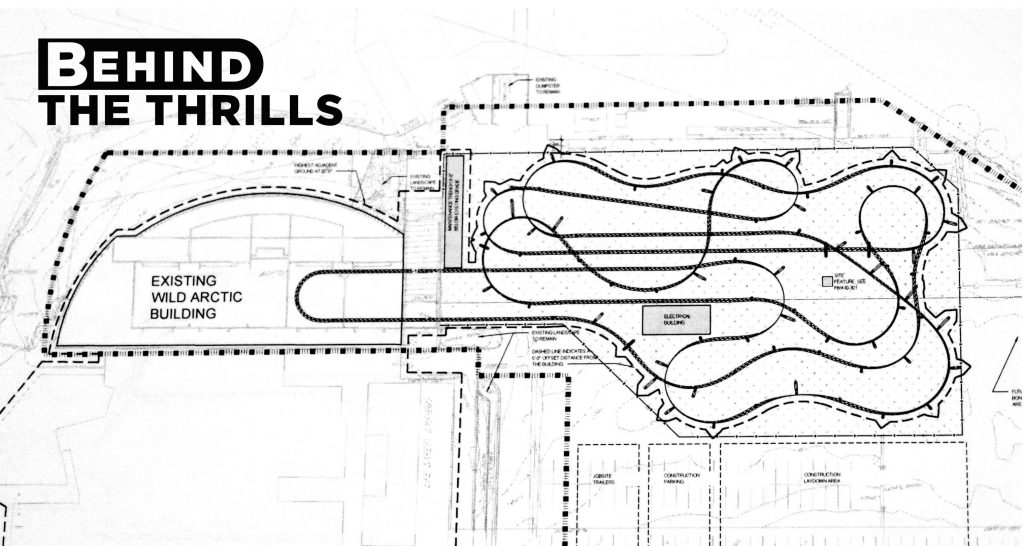
If the project is approved, SeaWorld will demolish all four of its Wild Arctic simulators, which just turned 25 years old in 2019. The space occupied by two of the simulators will be re-utilized for the coaster’s station and first launch area. The rest of the coaster will sprawl into the parking lot east of the Wild Arctic building, which is currently being used as storage for the construction of Emperor, the park’s 2020 Dive Coaster.
Although the project is in its infancy, the coaster will most likely be an Intamin Family Coaster similar to Wave Breaker at SeaWorld San Antonio. However, instead of a SeaWorld Rescue mission over the water in a jet ski, this will be a rescue mission through the Arctic tundra.
The Ride Experience
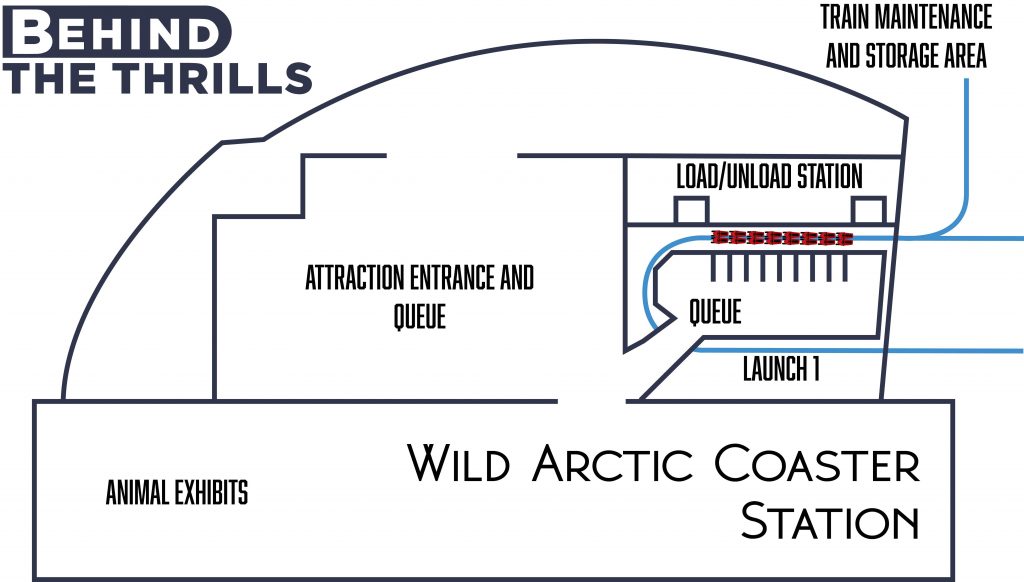
This simplified drawing shows a top-down view of the Wild Arctic station. Although there are no concrete plans for the attraction’s queue, park guests will most likely enter through the current Wild Arctic building. They will then have to choose to either enter the Wild Arctic exhibit directly, or ride the coaster. It is possible that the queue will be placed in the space occupied by the other two simulators, and it will likely present educational information about Arctic animals such as belugas, seals, and walruses as well as information regarding how climate change is threatening the Arctic ecosystem.
Towards the end of the queue, riders will cross over a bridge into the main station area. They will choose one of eight rows, and take a seat on the unique sit-down trains. Although the plans do not indicate how the trains will be themed, the renderings depict trains that are very similar to the jet ski-style vehicles found on Wave Breaker. One possible scenario is that the trains will be themed to a snowmobile racing through the Arctic.
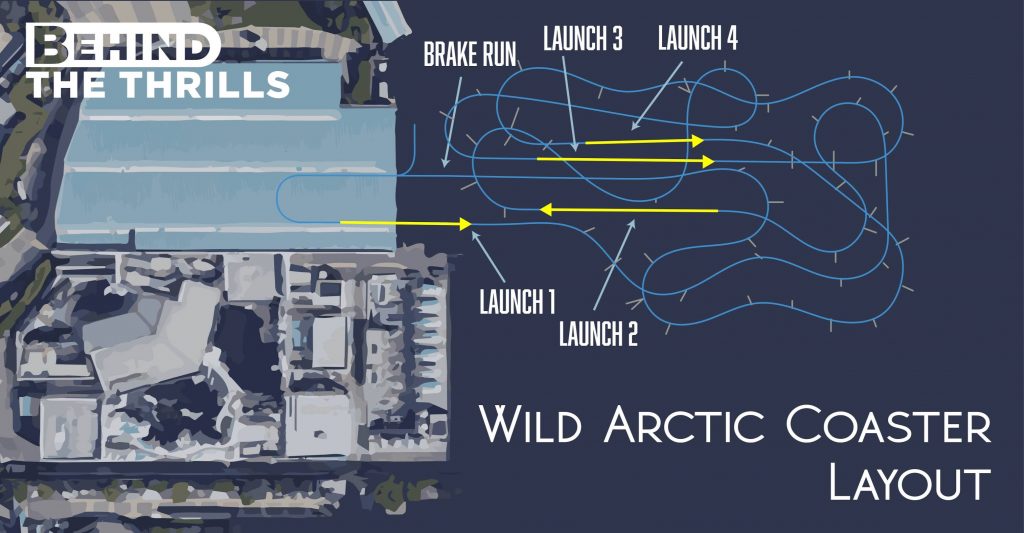
According to this annotated interpretation, the coaster will contain four launches, as well as many exciting twists and turns. After exiting the station, the train will make a 180° turn onto the first launch track. Although we’re not exactly sure what riders will see, there will probably be some sort of pre-show that informs riders about the type of Arctic rescue mission they will embark on. After the spiel finishes, the drive tires will boot up and launch the train.
Here’s where the fun begins. The first element riders will experience is a S-Curve, similar to the first element on Wave Breaker. Next, the train will stay low to the ground as it goes through multiple helices and side-to-side transitions. Next comes the second launch, which will boost riders up about 30 feet into an upwards helix. Riders will experience some quick turns and airtime hills. They will also wind under several pieces of track, feeling almost as if they can touch the track above them. The train will make another heavily banked turn into the third launch. Riders will once again be boosted about 30 feet upwards. The train will pick up speed once again as it travels low to the ground, interacting with the area’s landscaping.
However, the ride’s not over yet! Riders will then enter the fourth and final launch. The train will cross over multiple stretches of track and bank from side-to-side. Riders will experience two more low to the ground helices before hitting the final brake run. Overall, the coaster will reach a maximum height of 30 feet and reach a top speed of about 42 miles per hour – 1 mile per hour less than Manta.
Analysis
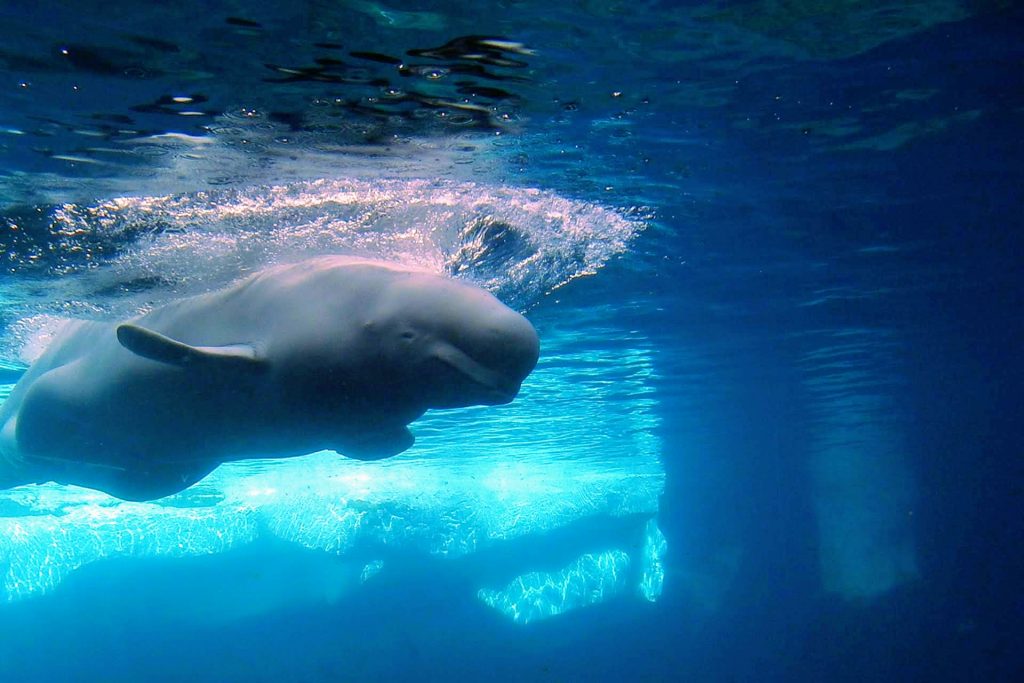
Based on the plans above, this attraction looks like it will be a great addition to the park as an exciting, less-intense family coaster. Its theme and close proximity to the Wild Arctic exhibits will undoubtedly make it very popular with young kids and their parents. Although it is yet another launch coaster for the park, the jet ski-style vehicle will provide a very different experience. Hopefully, the park will add nice landscaping with pine trees and Arctic vegetation to simulate the cold tundra.
The 2021 coaster is a great addition for both coaster enthusiasts and animal lovers alike. The attraction will rejuvenate an aging corner of the park by replacing the Wild Arctic simulator ride, one of the most unpopular rides in at SeaWorld. When Wild Arctic opened in 1997, it was considered a state-of-the-art attraction that rivaled Star Tours at Disneyland. The strategic placement of the animal exhibits after the ride made it feel as if you were actually being transported to the Arctic. However, the simulator’s dated CGI, blurry graphics, and rough ride experience give it an outdated feel. With a new attraction that will likely retain its charm for decades, the park is able to add another coaster to its growing lineup while continuing the educational mission on which it was founded.

After taking a journey on a snowmobile, riders will then enter the “research base” filled with different animals that you can find throughout the Arctic. This means that those who wouldn’t normally take the time to walk through an animal exhibit will be educated through the ride’s queue, educational signage, and direct interaction with beluga whales, seals, and walruses. The animal exhibits at Wild Arctic are among the best in the park, and it’s great to see that they will be maintained for years to come. To preserve the Arctic feel and protect the animals at the facility, SeaWorld is working with bioacoustic specialists in order to implement sound-reducing measures so that the coaster will be barely audible outside of the ride area.
In order to begin construction, the Wild Arctic simulator ride will have to close in spring or early summer 2020 to give construction crews enough time to demolish the simulators and associated equipment. It is likely that construction on the 2021 coaster will commence immediately following the completion and opening of Emperor, which will hopefully be around May or June 2020.
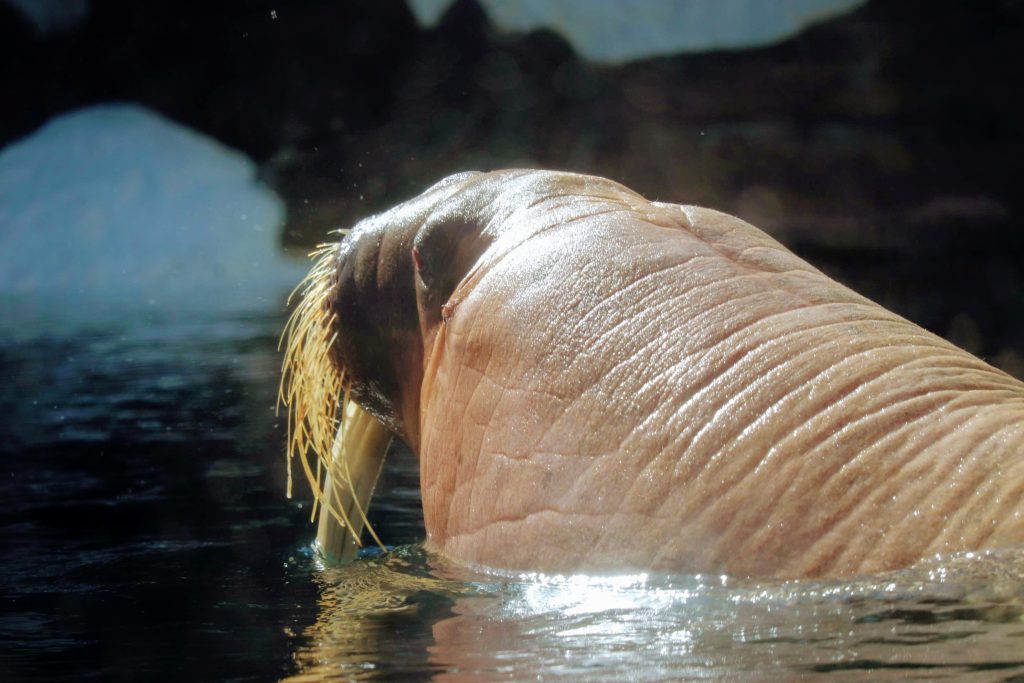
If SeaWorld’s 2021 project comes to fruition, it will be the fourth consecutive year of roller coaster additions to the San Diego park. In 2018, the park added Electric Eel, a 150-foot tall SkyRocket II coaster. In 2019, the park debuted Tidal Twister, the worlds first SkyWarp Horizon ride. And in 2020, Emperor, the tallest dive coaster in California, will open.
Again, we want to remind everyone that these plans are not final. Capital projects change all the time, and this is no exception. However, the fact that the park is willing to invest in another major attraction shows that it is on a winning streak with the introduction of thrill rides that connect with an educational and conservation message.
SeaWorld’s 2021 coaster will bring park guests on a thrilling, educational experience that will teach them about the Arctic ecosystem. Hopefully, the re-imagined Wild Arctic will enable park guests to experience the Arctic through the coaster ride, connect with the Arctic through the amazing animals that call it home, and leave wanting to protect the Arctic, a vital part of our planet.
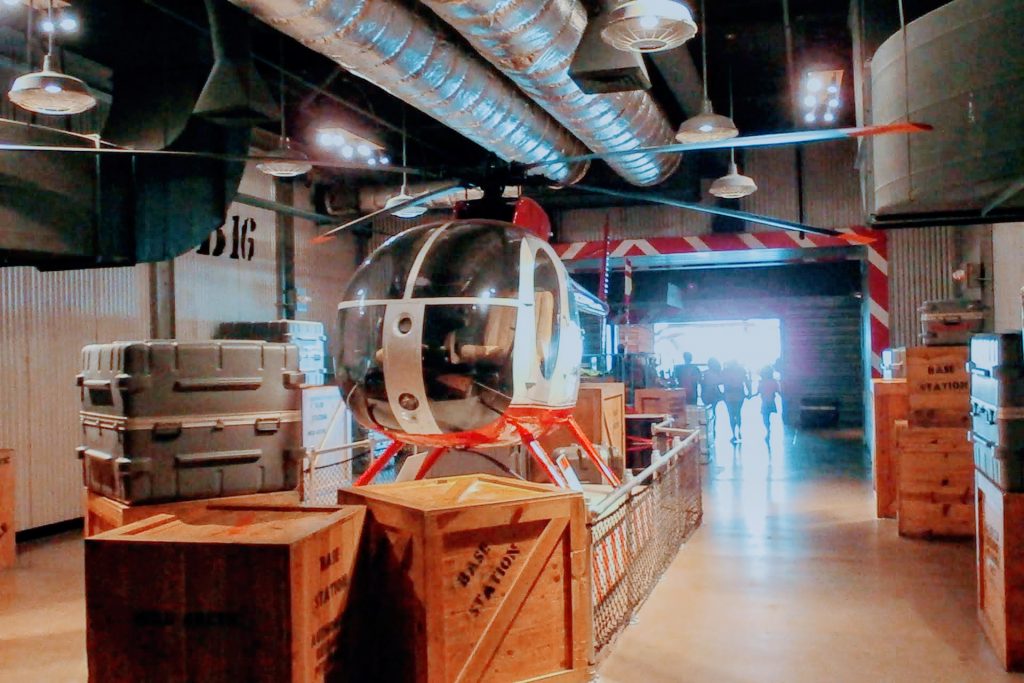
Stay tuned for more from SeaWorld, and be sure to get social with us on Facebook and follow along with us on Twitter @BehindThrills for the latest updates!
For our latest theme park videos please be sure to subscribe to us on YouTube!


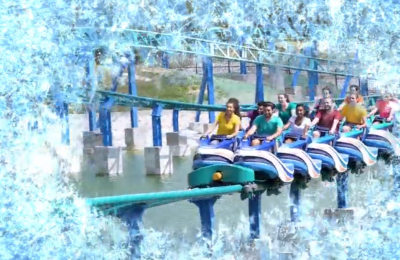
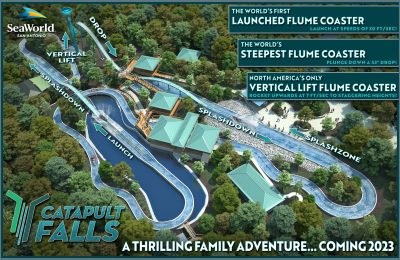





 Concerts, Food,
Concerts, Food, 









 #velocicoa
#velocicoa


 #kingsdominion #i305
#kingsdominion #i305 




 on top of the world
on top of the world